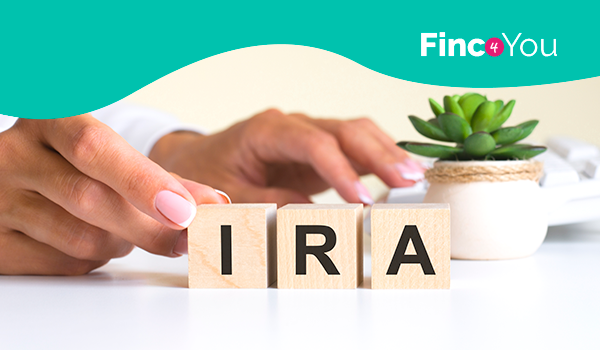There are strict rules about how much you can contribute to your Roth IRA.

Contributions to a Roth IRA are made in after-tax dollars, which means your money can grow tax free. If you are willing to receive distributions from your Roth IRA upon retirement (or after age 59), you will also not pay any income tax on your distributions.
Keep in mind that there are some limits to your retirement strategy. For example, if you are under 49, you can contribute a maximum of $6,000 for the 2021 tax season. Learn more about IRA 2021 below!
What amount can you apply as contribution to the ROTH IRA 2021?
For the 2021 tax season, the standard Roth IRA contribution limits will remain the same as last year, with a $6,000 limit for individuals. Plan participants age 50 and older have a contribution limit of $7,000, commonly known as the recovery contribution. You can also contribute to your IRA until the next Tax Day.
| Contribution year | 49 and below | 50 and more (catch up) |
| 2021 | $6,000 | $7,000 |
| 2020 | $6,000 | $7,000 |
| 2019 | $6,000 | $7,000 |
| 2018 | $5,500 | $6,500 |
| 2017 | $5,500 | $6,500 |
| 2016 | $5,500 | $6,500 |
| 2015 | $5,500 | $6,500 |
| 2014 | $5,500 | $6,500 |
| 2013 | $5,500 | $6,500 |
| 2012 | $5,000 | $6,000 |
| 2011 | $5,000 | $6,000 |
| 2010 | $5,000 | $6,000 |
| 2009 | $5,000 | $6,000 |
All about ROTH IRAs
The point of opening a Roth IRA is: not everyone can use this type of account. We’ve included some key IRA rules that you need to know below.
Distributed funds: Roth IRA accounts offer some unique benefits outside of future tax savings. For example, you are not required to withdraw RMDs from a IRA at any age and you can keep your funds in your account as long as you live.
You can continue to make contributions to a. pay a IRA after reaching the age of 70 as long as you earn taxable income below the Roth IRA income limit.
Income limit: Not everyone can contribute to a IRA account due to income limits. There are income guidelines that must be followed – it is even possible to have an income so high that you cannot use a IRA. If your taxable income falls within certain income brackets, your IRA contributions may be eliminated. This means that you will not be able to deposit the full amount into your Roth account. Learn how Roth IRA income and expiration limits work, depending on the status of your income tax return.
Married couples who apply together:
• Couples with Modified Adjusted Gross Income (MAGI) less than $196,000 can deposit the full amount.
• Couples with a MAGI between $196,000 and $205,999 can deposit a reduced amount.
• Couples with a MAGI of $206,000 or more cannot contribute to a Roth IRA.
• Married couples who apply separately:
• Couples with a MAGI below $10,000 can contribute a reduced amount.
• Couples with a MAGI of $10,000 or more cannot contribute to a IRA.
Individual taxpayers:
• Individual taxpayers with a MAGI less than $124,000 can deposit the full amount.
• Individual payers with a MAGI between $124,000 and $138,999 can deposit a reduced amount.
• Individual payers with a MAGI of $139,000-dollars or more cannot contribute to a Roth IRA.
Allowed contributions for retirees
If you have another type of retirement account, such as a traditional B. IRA or even a 401(k) Workplace, it can be tempting to convert that account into a Roth IRA. This is known as a Roth IRA conversion, where you have to pay income tax on your distributions now so you can avoid income tax later.
While this may seem aggressive and unnecessary, there are many scenarios where a Roth IRA conversion can take place. For example, let’s say you’re not making a lot of money in a given year and you want to convert to a Roth IRA with an extremely low tax rate. You may be paying tax now and not paying income tax on distributions later in life if you are taxed at a higher rate.
As mentioned earlier, Roth IRA accounts do not require a minimum distribution. as long as you live Moving your money to a Roth IRA can make sense if you don’t want to be forced into minimum payments (RMDs) as you would a traditional IRA or a 401(k) at age 72.
With a Roth IRA conversion, you would create an opportunity where your money could grow and grow without touching each other for a much longer period of time.
When does the Roth IRA re-characterize?
Recharacterization occurs when you move money from a Traditional IRA to a Roth IRA, or from a Roth IRA to a Traditional IRA. More specifically, re-characterization changes the way specific posts are reported based on the IRA type. For example, you believed that your income in any given year would be too high to be a Roth in any IRA year, but you found that your income was actually low enough to contribute the full amount. If you’ve already contributed to a traditional IRA, reconfiguration can help you transfer your money to a Roth IRA after all.
Of course, the opposite is also true. You may have thought that your income qualified you to contribute to a IRA, but at the end of the year you found out you were wrong after contributing to Roth. In that case, a new characterization for a traditional IRA might make sense.
These changes can be complicated and have significant tax consequences. It is best to consult a financial advisor or tax specialist before changing the title of your contributions to the IRA and facing possible tax ramifications.
Early withdrawal, what are the penalties?
You can withdraw your IRA contributions at any time without penalty. In addition, you can receive contributions and earnings from age 59 and a half if you have had a Roth IRA account for at least five years. This is considered a qualifying payment and does not incur prepayment penalties.
However, there are downsides to having to withdraw your income before retirement age. If you decide to withdraw your income from the Roth IRA before age 59, you will face a 10% penalty. However, there are some exceptions.
For example, if you’ve had the account for at least five years and are entitled to one of these exceptions, you can withdraw revenue from your IRA account without paying a penalty:
• You bought a house with money for the first time,
• you are completely and permanently disabled or
• his heirs received the money after his death.
Conclusion

If you think a IRA is the best retirement tool to target, you can open a IRA account with almost any brokerage account. But not all of them offer the same range of investments to choose from. Some brokers also offer more help in building your portfolio and others charge higher (or lower) fees. That’s why we encourage you to think about your type of investor before opening a IRA. Need help creating your portfolio? Or do you want to pick individual stocks, bonds, mutual funds and ETFs and create your own?
When comparing companies, always check investment rates and the types of investments each account offers.


